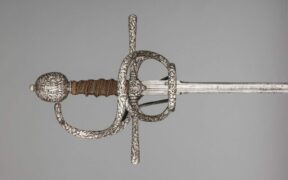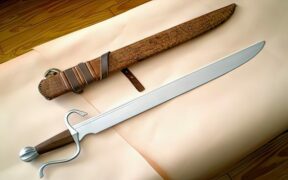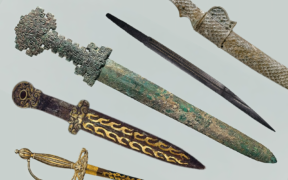Our content features commercial links to our products, committed to transparent, unbiased, and informed editorial recommendations. Learn More
Cutlass Sword Explored: Parts, History, and Use
NO AI USED This Article has been written and edited by our team with no help of the AI
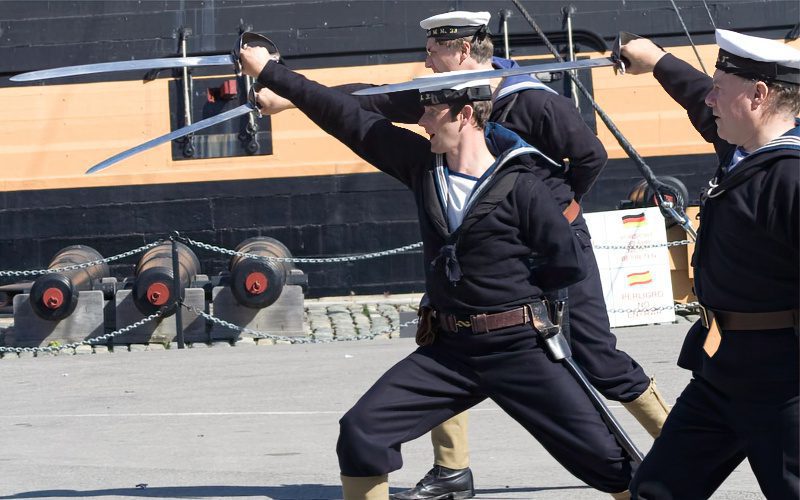
The short, one-handed, sturdy, brute, and simple-looking sword that was and still is used by the warriors of the seas is known as the Cutlass Sword.
It is a single-edged weapon, primarily used for slashing, that started as a land sword but grew to be the weapon of sailors and, most popularly, pirates.
This article will cover its origins, whether it’s a saber, and its features, uses, and history.
Characteristics of a Cutlass Sword
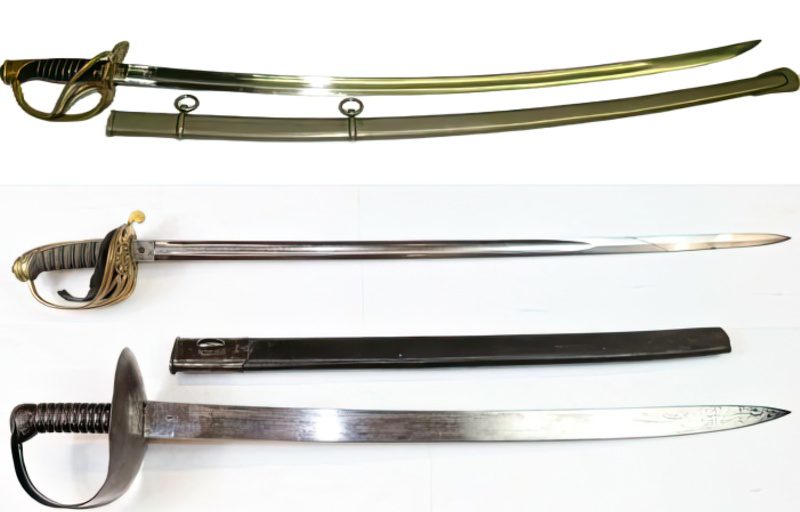
The Cutlass is a short, broad saber, similar to other sabers but with some differences. It combines the features of both infantry and cavalry sabers, being heavier and sturdier than the former but shorter than the latter.
This makes it powerful in combat, acting almost like a large knife or machete. It’s especially effective in close combat, even if it’s mainly useful for strikes below the knee due to its short length.
Anatomy & Parts
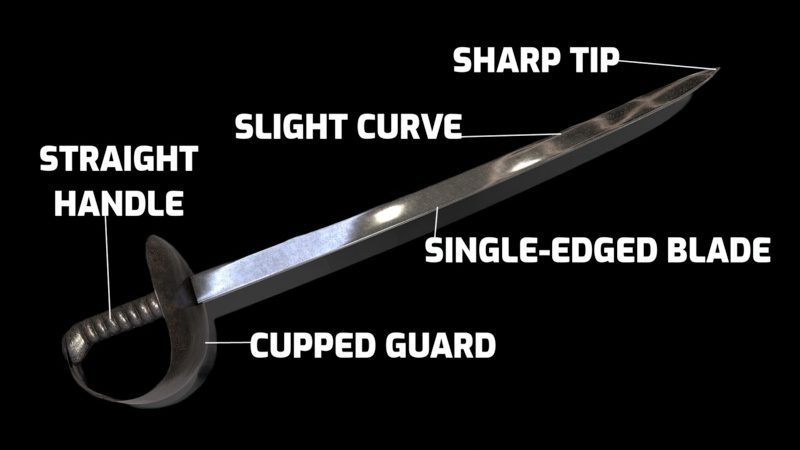
The Cutlass is a very popular weapon that greatly resembles the Hanger Sword. It is a short side sword that hangs on the belts of those who use it and has a slightly curved but broad blade. It has a simple design and a distinctive cupped guard with a brass-wired handle that serves a great purpose in close-quarter combat situations.
1. Blade
The Cutlass Sword has a single-edged blade that can be straight, slightly curved, or strongly curved. It’s broader and shorter than typical swords, making it ideal for close combat.
This sword is valued for its versatility in battle, effective for both slicing and stabbing because its tip is sharp on both sides.
Made of durable stainless steel, the Cutlass is about 15 to 23 inches (40 to 60 cm) long, perfect for the close-quarters combat often found in ship battles.
2. Guard
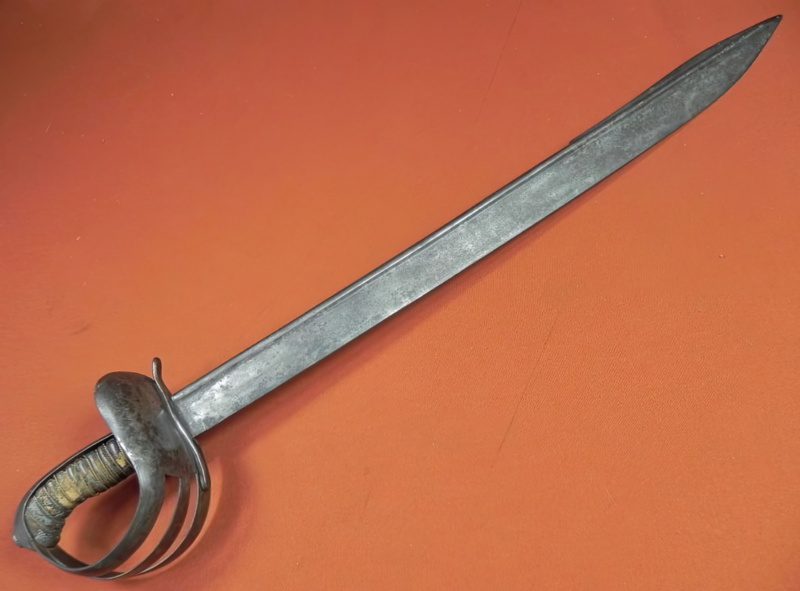
The Cutlass Sword often has a guard shaped like a cup, branches, a shell, or a basket. This design is great for a short sword, offering excellent hand protection during close combat without losing flexibility.
Some Cutlass Swords also feature a large quillon, or side projection, on the guard. Experts believe this design was common for naval cutlasses. It let sailors climb ropes with the sword in hand.
3. Handle
The Cutlass has a straight handle that extends through to the end of the pommel. While some have a slightly curved handle that widens near the guard for a better grip.
Its handle often features openings, rough surfaces, and sometimes spiraled brass wire, which strengthens the grip. The typical Cutlass handle is about 4.7 to 6 inches (12 to 15 cm) long.
Scabbard

Ideally, the scabbard of the Cutlass short sword should be the same size as the blade itself. It is usually made of leather as it is light, making it easy to carry in a belt. However, there are some scabbards made from wood or steel.
Length & Size
The Cutlass is in the group of short swords, making it an ideal weapon for use in situations where combatants are in a tight-knit area. A common length of the Cutlass Sword is around 28 to 36 inches (71 to 90 cm).
Weight
Being a short sword means that the Cutlass would ideally be lightweight, but that wasn’t always the case. It needed to be sturdy and dense because it wasn’t just used in combat scenarios involving other swords.
It was also an excellent tool for slicing through thick rope and wood. That is why it was designed to be heavier, usually between 2 to 3.5 lbs (0.9 to 1.6 kg).
Uses of a Cutlass Sword
The Cutlass Sword is a short sword made to be used as a one-handed weapon. It’s heavier in weight and delivers a powerful blow due to its brute-looking blade.
The Cutlass is primarily an offensive weapon that is very effective at slicing through flesh, rope, and wood. Due to its sharp tip, it is also ideal for delivering deep puncture wounds.
Daily Tool Activities
The Cutlass Sword was favored by the lower classes, everyday soldiers, and guerrilla fighters like Caribbean pirates due to its usefulness in daily tasks. Sailors often use it in various forested environments.
It was great for clearing tall grass, trees, and branches, cutting sugar cane, and thick ropes on ships. With the functions of a large knife or machete, the Cutlass was easy to keep up and make, adding to its value.
Warfare
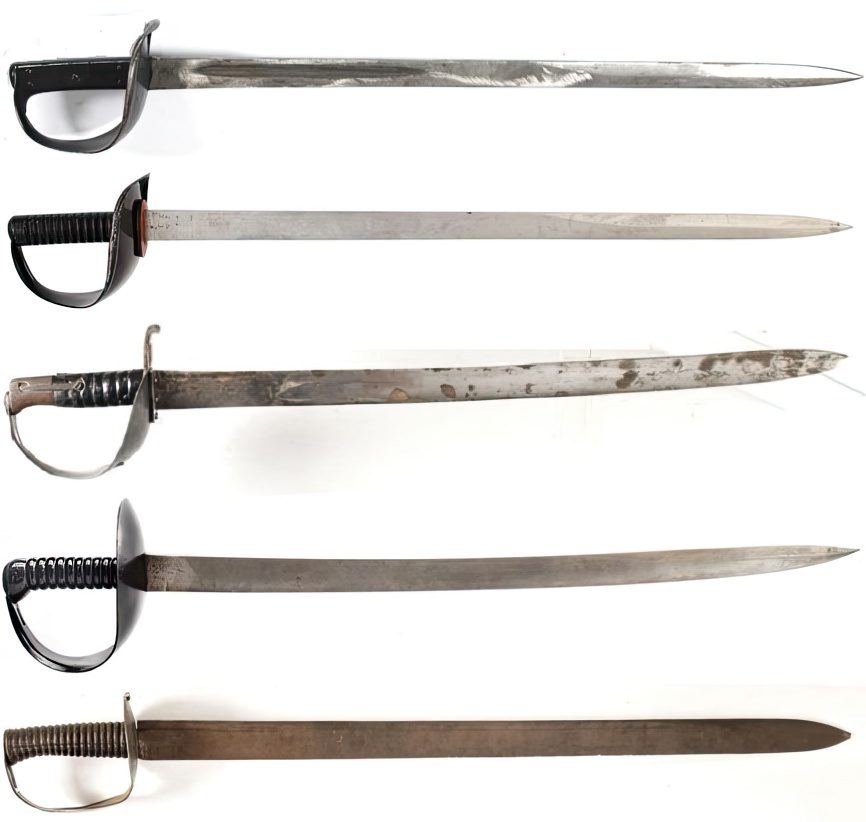
The Cutlass was a type of sword made during a time when guns were becoming more common.
Unlike the longer Rapier, the Cutlass was shorter and stronger, making it a popular choice. It was affordable and effective in fights.
Sailors and pirates often used it, earning it the nickname “pirate sword.” Although not always worn by soldiers, it was great for close combat when battles turned to hand-to-hand fighting.
Modern & Cosplay
Today the Cutlass Sword is one of the most popular swords in the world. It is mostly called a Pirate Cutlass Sword because it is generally linked to Pirates, although many others use it.
If one were to attend a LARP (live-action roleplay) event with Pirates, the Cutlass would most definitely be seen and used.
Many modern schools are teaching the art of Cutlass fencing along with the use of a flintlock pistol. It is a fairly simple sword to use, so if you want to imagine yourself as a bloodthirsty pirate, adding it to your wish list is a must.
History of the Cutlass Sword
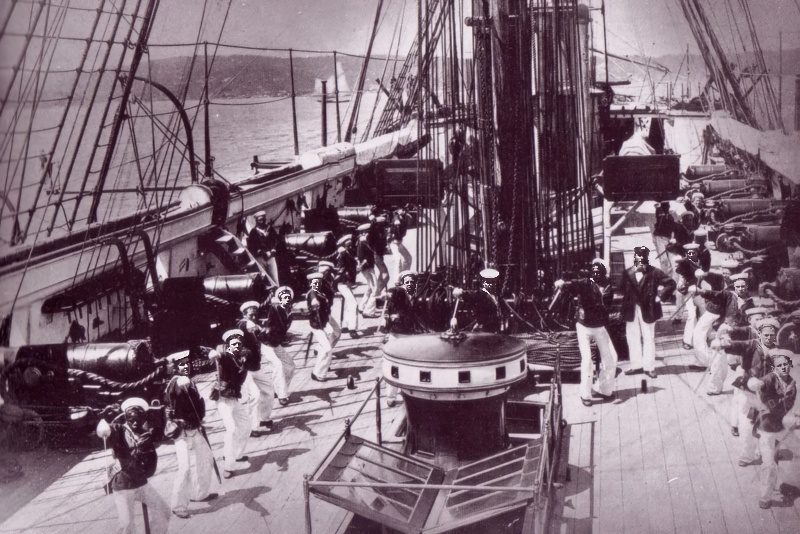
The Cutlass Sword wasn’t invented by pirates, despite common myths. It started in late 16th or early 17th century Europe as a weapon for soldiers, similar to the Hanger Sword or Backsword. It was easy to carry, making it handy for daily use.
The name “Cutlass” comes from the French word “coutelas,” meaning a big knife, much like a machete. It evolved from the Falchion sword, known for its shorter, wider blade ideal for slashing.
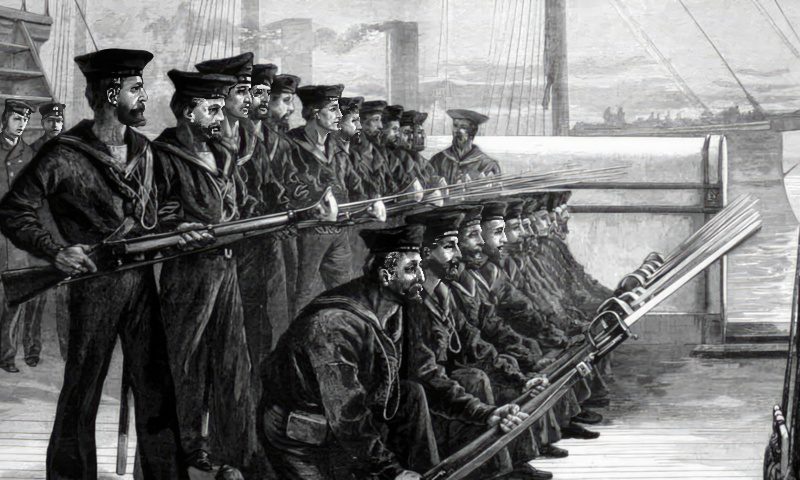
While it was popular among soldiers for its simplicity and affordability, it became famous at sea. Its design, with a broad, short blade and a big guard, made it perfect for close fights on ships. Sailors and pirates, especially in the Americas and Europe, favored it.
They practiced singlestick, a form of training with wooden swords, making the Cutlass a practical tool and a weapon.
The Cutlass was prominent from pirate battles to the American Civil War and was last used in World War II by the Royal British Navy and in the Korean War at the battle of Incheon.
